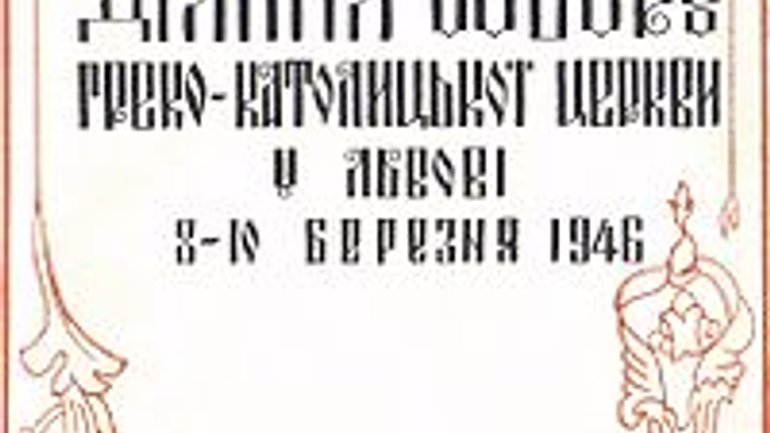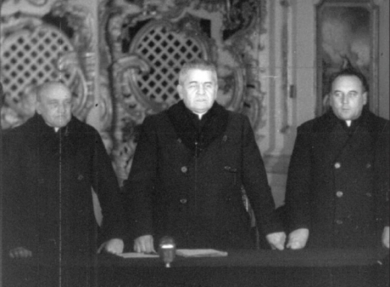UGCC commemorates the developments of March 1946 – pseudo council aimed to eliminate the Church

On March 8, 1946, the Communist regime held a pseudo-Council in Lviv, which aimed to eliminate the Greek Catholic Church. After this meeting, Greek Catholic priests and lay people who did not want to switch to Moscow Orthodoxy came under the pressure of a repressive machine. Thousands of them died in the camps, and the survivors were forced to hide. The Greek Catholic Church in Ukraine went underground.

Historian Oleg Turiy commented on these tragic events in the history of the UGCC:
“The whole drama of the history of the liquidation of the UGCC was that this Church did not fit the Soviet system. Even because it was Ukrainian, it was connected with the development of Ukrainian self-consciousness, Ukrainian national growth. This Church was Catholic, which had millions of relatives abroad, which was connected by a shared unity with the entire Catholic world, with the Apostolic See. But, as for me, the most important reason was that the UGCC was not part of any state or political mechanism. It was the Church of its people, the Church that came from this people, that lived with this people, it shared all their hard times, and so it became an organic part of public life. And a system that was based on total control, which excluded the possibility of alternative thought or independent position, could not tolerate a spiritual institution. These three reasons for hatred, to put it short, stem from the very name of the Ukrainian Greek Catholic Church. They laid the basis of Stalin's desire to destroy this Church, using another Church for this purpose and formalizing the liquidation under the guise of the so-called ‘reunification’.”
This” Council", according to Oleg Turiy, was not a Council of the Greek Catholic Church, because there was no single Greek Catholic Bishop, there was no permission of the Supreme power, that is, the Roman Apostolic Throne.
"The participants of this pseudo-meeting were selected and even brought by the NKVD, and this meeting took place under their supervision. If you watch a movie about a pseudo-election or see photos from it, you immediately notice that these people raise their hands, but look away, because this "unanimous" vote was held under pressure. By voting, they did what the system required them to do. Many of the people who attended the Council later refused to join the Orthodox Church. Many of them, even though they agreed to cooperate with this system, were still arrested or prosecuted later. Initially, this meeting was held according to the scenario of special services, which were personally authorized by Joseph Stalin as the head of the then Soviet state," the historian explained.

The Council of Lviv was convened on March 8-10, 1946 in accordance with the plan of the NKVD of the USSR to eliminate the Ukrainian Greek Catholic Church, an initiative group consisting of three priests: Gavryil Kostelnik, Mykhaylo Melnik, and Antony Pelvetsky. This Council was not recognized by the Vatican since not a single Bishop of the UGCC was present. This is why this assembly was called a pseudo council. The convocation of this "Council" was preceded by a mass physical and moral terror on the part of the NKVD in 1944-1946 over all the hierarchs of the Greek Catholic Church in Galicia with Metropolitan Iosyp Slipyy at the head — and their conviction by a secret court in Kyiv in March 1946 for long-term imprisonment or exile in forced labor camps. Subsequently, the members of the Initiative group began to call on the Ukrainian Catholic clergy to join the ROC for an example of a "political connection between Ukraine and Russia". The consequences of the pseudo-Council of Lviv were eliminated in 1989-1990. Then the UGCC came out of the underground.









